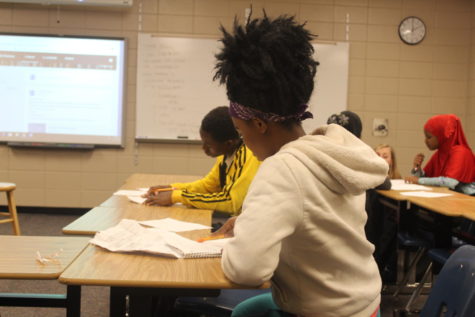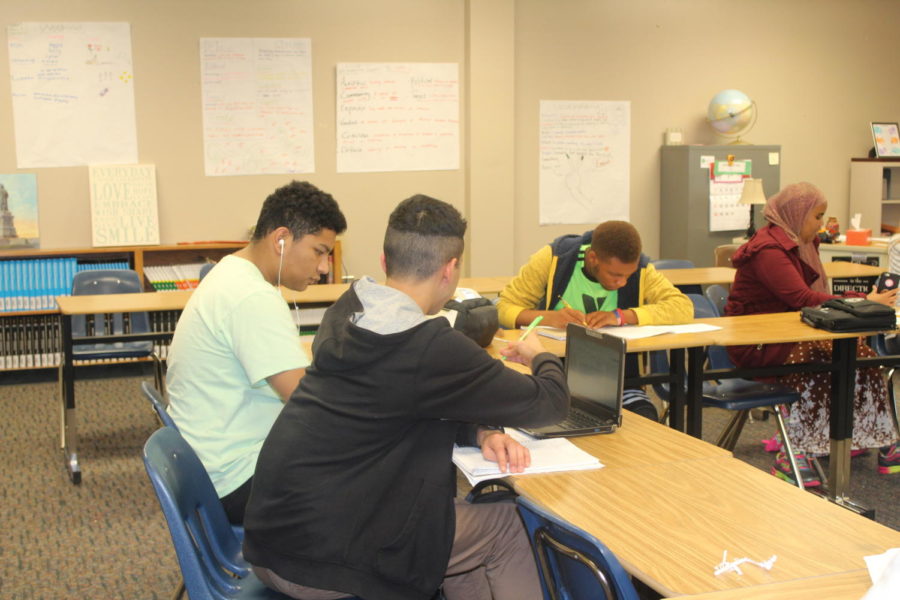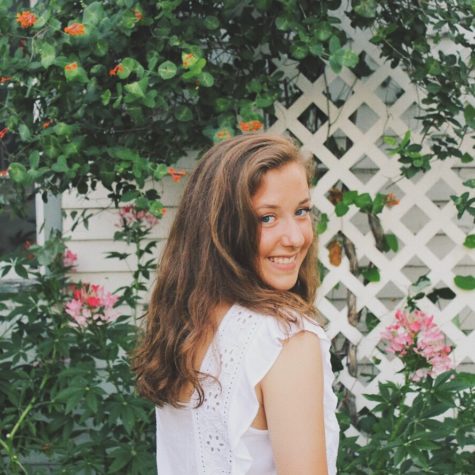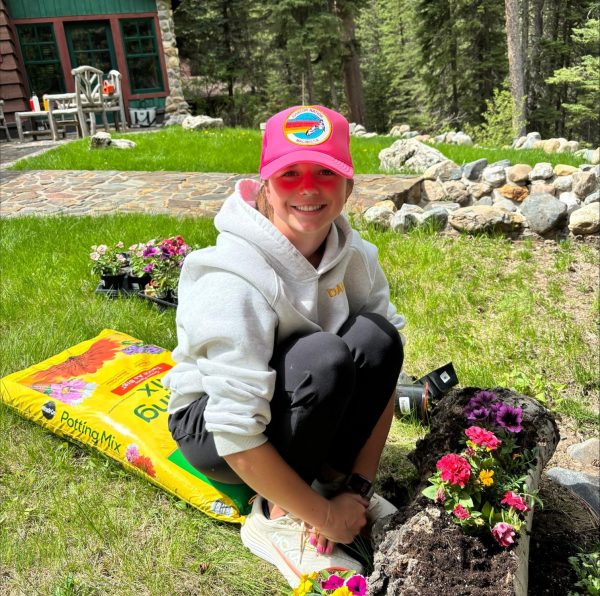Learning and loving a new life at LHS
Photo provided by Lauren Teller.
Kevin Alvarado and a peer work on an assignment for their World History class with Mrs. Griese.
October 30, 2018
The snowy cornfields of South Dakota are a stark contrast from the heat of tropical Tanzania, Mexico and Kenya, but for LHS students Esther Balange, Kevin Alvarado and Maryan Yussuf, opposite sides of the globe have have both been called home.
In the back corner of E wing lies students who are bilingual, or who even speak multiple languages, are hard at work studying. Although only a small group among the immense population here at LHS, the students have intriguing stories that the student body has yet to learn of.
Although each of the students comes from a different background, they can all agree that life in America has been much different from that in their home country. Balange, a junior at LHS recalls her school in Tanzania as being much more strict than her American school now, but also appreciates the educational opportunities that she has now.
“In my country, school is a lot different,” said Balange. “Here in America, children can wear whatever they want, but my in my country, we wear uniforms. Here, you can wear underwear and come to school like that, but in my country we have uniform skirts, blue and white. For tradition, we can’t wear pants.”
Not only does America present learning opportunities, but many of the students in the program have a greater feeling of safety.
“In Mexico, there’s a lot of bad people,” said Alvarado. “Here, there’s a lot of peace. No one does drugs, and no one is ever killed, at least I never hear of anyone.”
To create an even greater obstacle, these students have had to learn English, a skill the majority of Americans take for granted. Students in the program are constantly working on building their skills and have been since immigrating here to the U.S. Although it was a hurdle in the beginning, students know have found confidence in their ability to communicate with new people and to embrace their second language.
“I learned English when I came to America,” said Alvarado. “It was really hard. The first year I was here, it was really confusing, and then during the second year, I started talking to more people, and I learned a lot. And now I just speak English in school. I never speak Spanish. With immersion kids, I sometimes help them and translate for them.”
These students never take for granted the opportunities given to them here in the U.S., and certainly never will. The people, experiences and opportunities have been treating them well.
“Life is good here,” said Balange. “Life is good. Education is better.”










